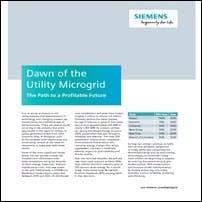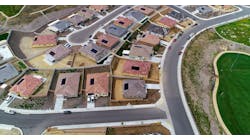A Case in Point of the First Utility-Operated Microgrid Cluster in the United States
Siemens’ Clark Wiedetz offers a lens into the first utility-operated microgrid cluster in the US, Commonwealth Edison’s Bronzeville microgrid, a project that uses Siemens’ microgrid software.
Clark Wiedetz, director of microgrids and renewable integration for Siemens Digital Grid
Today, for many states in the US, integrating distributed energy resources (DERs) is becoming increasingly important, and communities are creating plans that look closely at the needs of not only community sustainability, but also the needs of critical service providers, such as police, fire, and water. For example, a city might choose to add solar panels to the roof of city hall and have batteries installed in the basement to ensure that the crisis control room for the city is functional in the event of a power outage. In fact, most recently during the wildfires that swept through Southern California in 2017, there were reports of the fire hydrants losing water pressure due to the failure of critical fire pumps because of intermittent power outages. These two scenarios, one hypothetical and one very real, begs the question: How can utilities and communities be prepared to withstand extreme weather and other power outages while still successfully integrating DERs?
Illinois is all too familiar with the importance of resiliency and the ability to integrate DERs. The passage of the Future Energy Jobs Act in 2016 set a goal that by 2025, 25 percent of the state’s energy will be derived from renewable energy sources. The 2016 law also strengthens and expands funding Illinois’ Renewable Portfolio Standard by establishing a long-term procurement process and providing up to $200 million per year in funding for wind and solar development.
In February 2018 the Illinois Commerce Commission (ICC) approved Commonwealth Edison’s (ComEd) plan to construct a microgrid in Bronzeville on Chicago’s South Side. The project, which has received more than $5 million in grant funding from the U.S. Department of Energy, will enable the study of how microgrids support the integration of clean energy into the grid and enhance grid security to keep power flowing during extreme weather and other emergency events. This project expands the traditional definition of a microgrid to include entire communities, particularly within the proximity of the Illinois Institute of Technology’s microgrid, allowing for the first utility-operated microgrid cluster in the nation.
The Bronzeville community will use its local microgrid to ensure energy availability to critical service providers, such as police, fire, and water. ComEd and Bronzeville are leading the charge on resiliency and transformation, which will end up serving as an ideal example of how local communities can collaborate with their utility to not only establish grid resiliency and reduce their environmental footprint, but also ensure that energy availability to critical service providers is not interrupted in the case of an event.
Case for Bronzeville
Bronzeville was selected for this project following a comprehensive study by the ICC. The community is home to critical public infrastructure, such as hospitals and public headquarters, and most importantly, residents, businesses, and leaders who are highly engaged in efforts to continue invigorating the neighborhood. The project builds upon ComEd’s smart grid platform and the continuous effort of advancing the design and performance of its electric system. ComEd will not own the generation included in the microgrid and will look to Siemens’ Microgrid Management System to do its competitive bidding.
“The Bronzeville community is well-known for innovation and entrepreneurship and commitment to building a bright future,” said Paula Robinson, president of the Bronzeville Community Development Partnership. “A secure energy infrastructure and greater access to renewable sources are central to our vision…. It’s time to put this technology to the test and Bronzeville is the perfect place to do it.”
Phases of the project
The dual-pronged project is focused on developing advanced microgrid controller logic that can handle complex, grid-supportive situations as well as a parallel effort to explore the potential for large volumes of photovoltaic solar on microgrids when paired with stationary storage.
The project builds upon ComEd’s smart grid platform and the continuous effort of advancing the design and performance of its electric system.
The project is split into two phases:
Phase 1: The project will include 2.5 MW of load, require reconfiguration of an existing feeder, and installation of battery storage and solar PVs. It will directly serve approximately 500 customers.
Phase 2: The project will add more than 550 customers and an additional 4.5 MW of load and 7 MW of DERs, which is calculated to be enough to meet the peak electricity demand of customers within the microgrid footprint and maintain service when the microgrid is islanded from ComEd’s grid. The complete project is expected to serve more than 1,050 residential, commercial, and industrial customers.
Measurements for success
A broad range of metrics have been established to evaluate the project and its ability to positively impact the resilience of the energy system, the Bronzeville community, and other critical infrastructure, including:
- Energy System Resilience – Measuring energy system performance and resilience to threats.
- Community Resilience – Measuring primary and secondary impacts that the project may have on the Bronzeville community.
- Infrastructure Resilience – Measuring the ability of critical infrastructure systems to prepare for and adapt to changing conditions as well as withstand and rapidly recover from disruptions.
Download the new white paper from Siemens and learn more about how today’s utilities are beginning to prepare by entering discussions around grid modernization, the utility microgrid, DER compensation, and business model transformation, by sharply enhancing core utility priorities, such as reliability, resiliency, and efficiency.
Clark Wiedetz is director of microgrids and renewable integration for Siemens Digital Grid.








